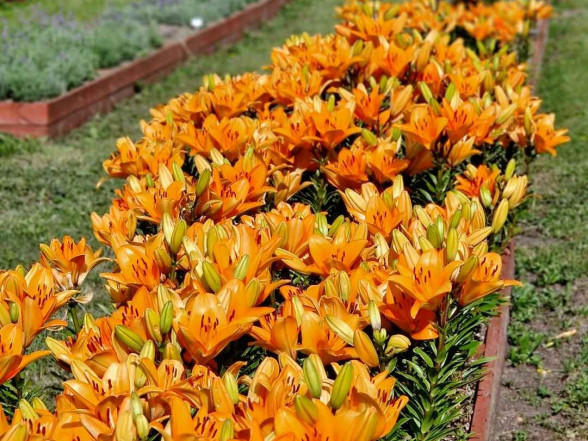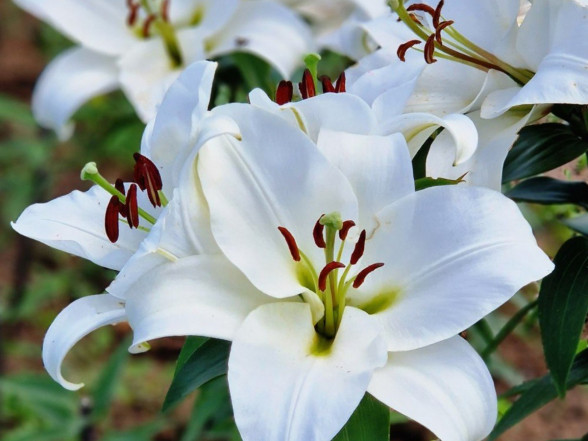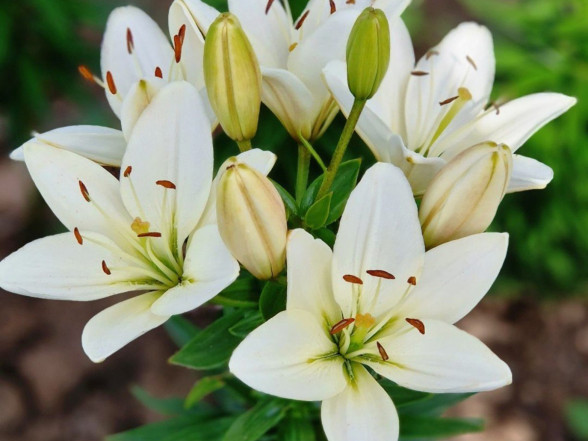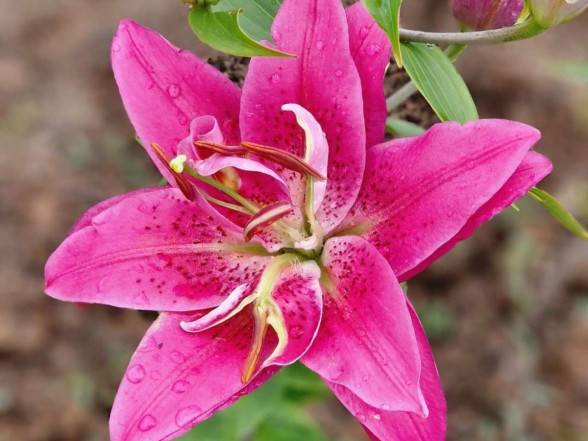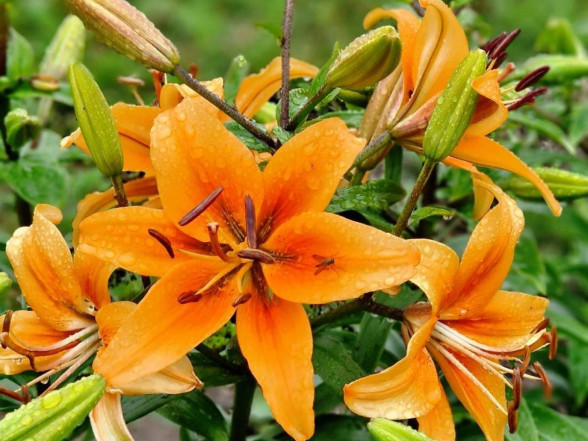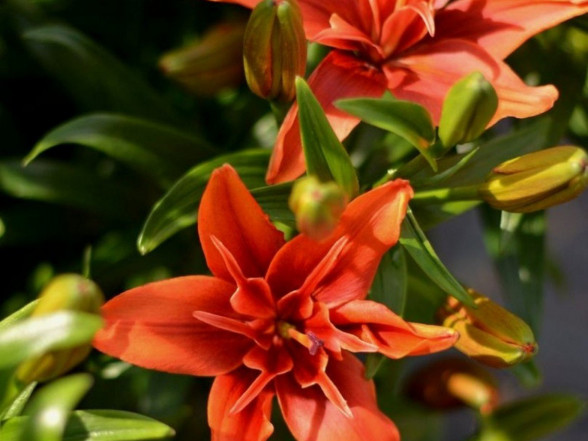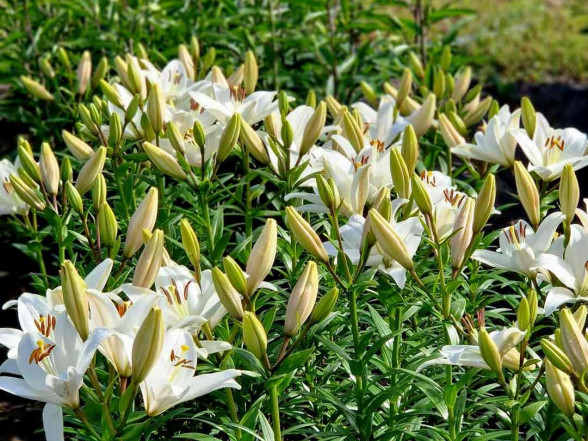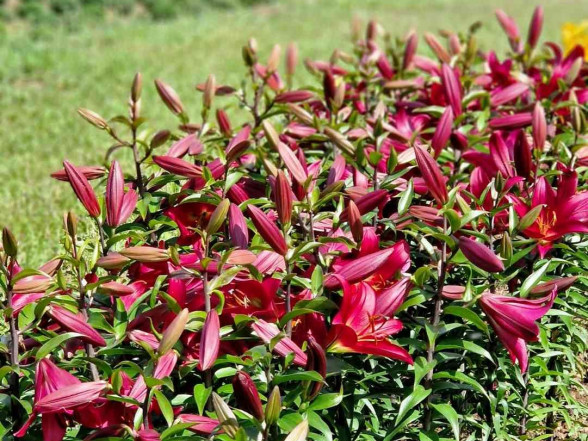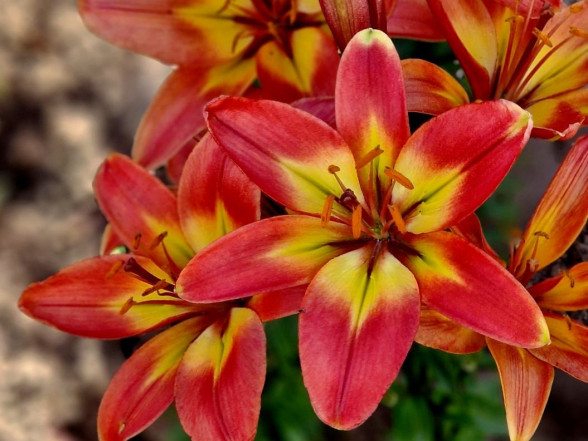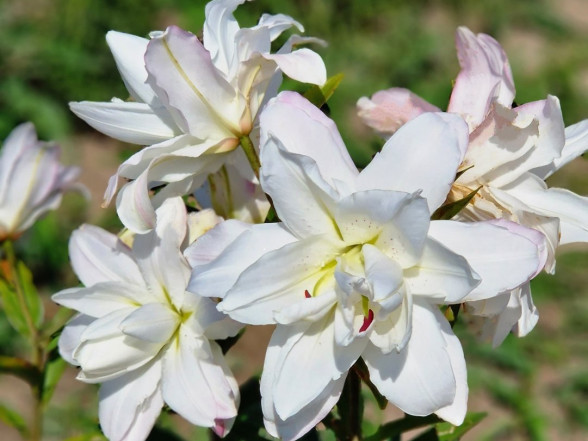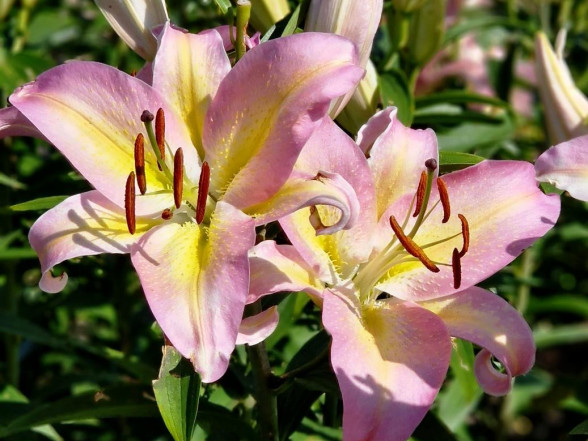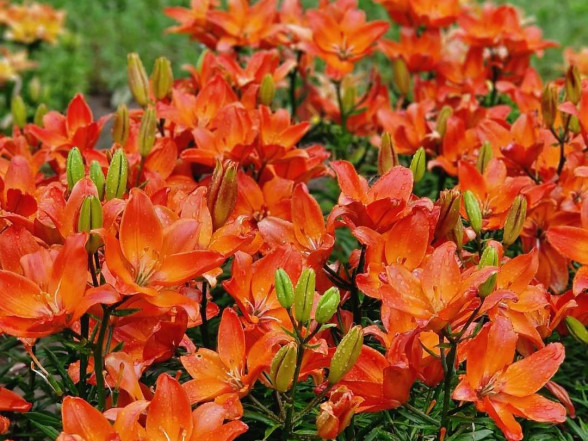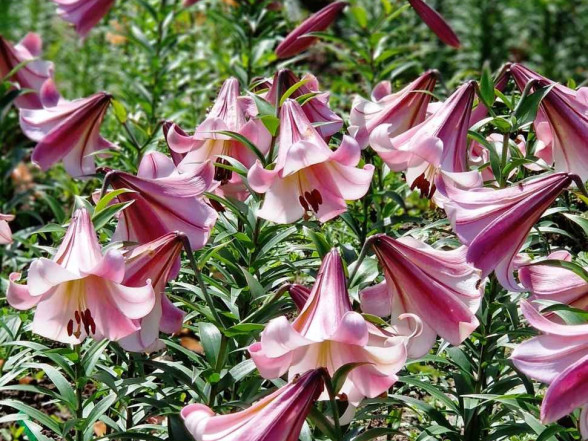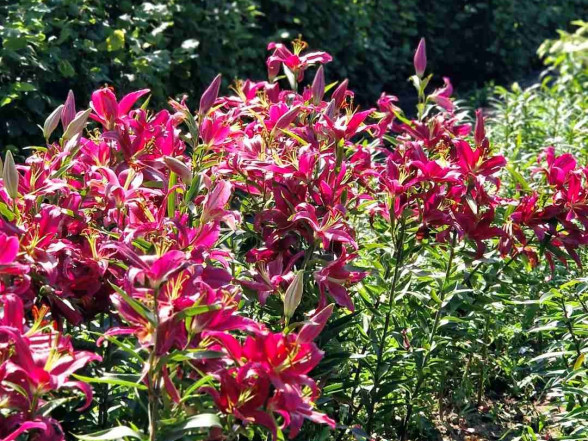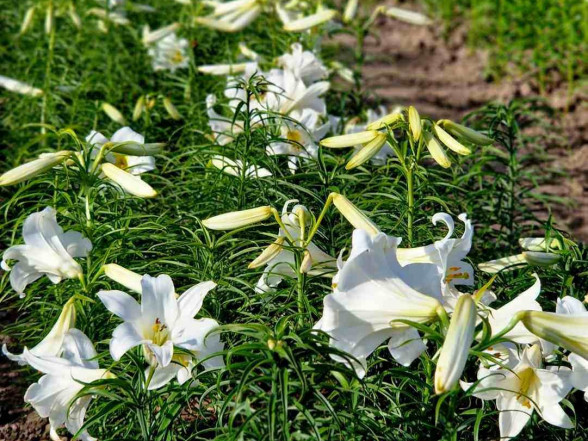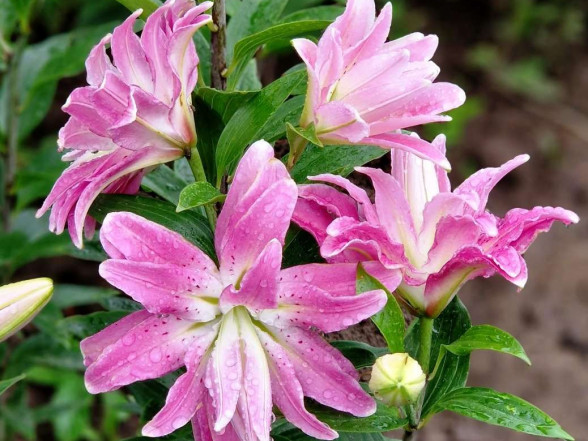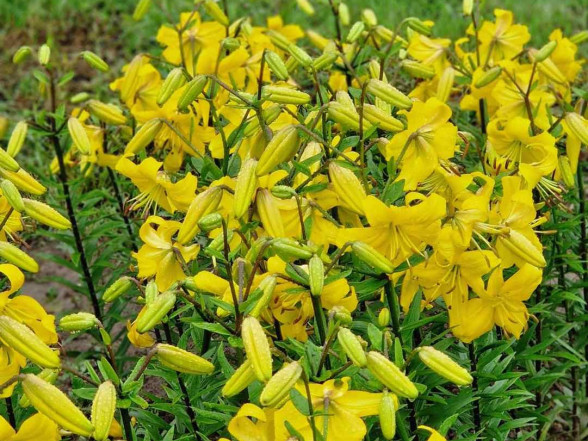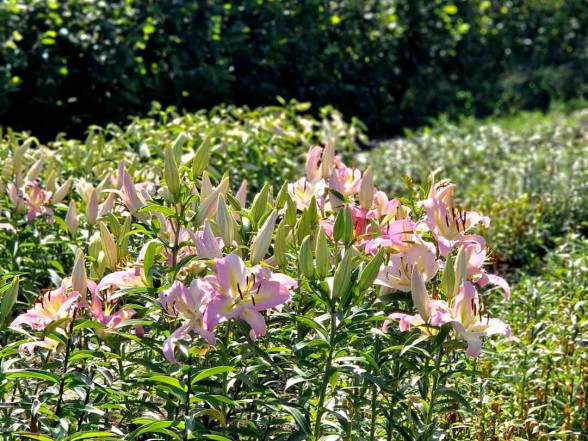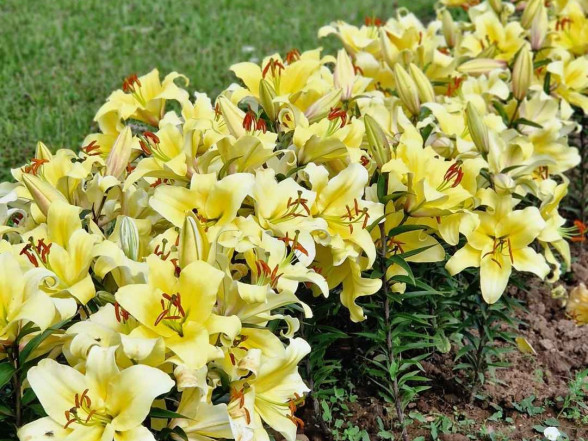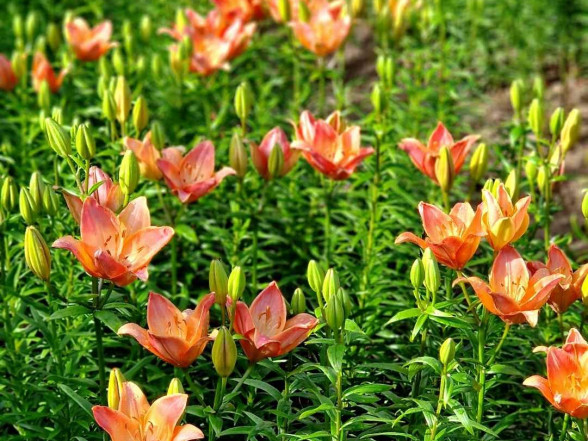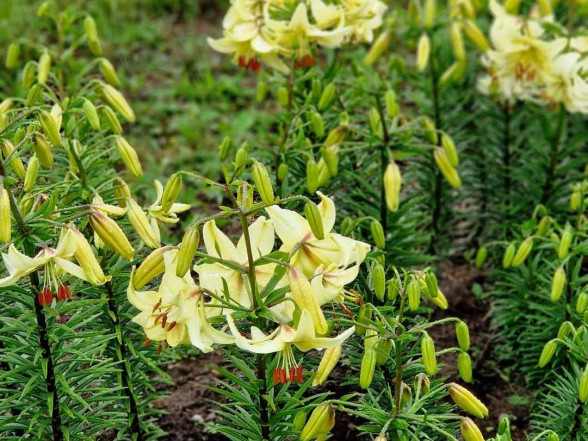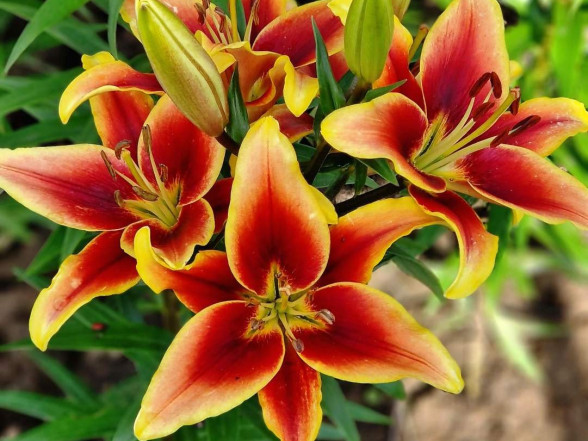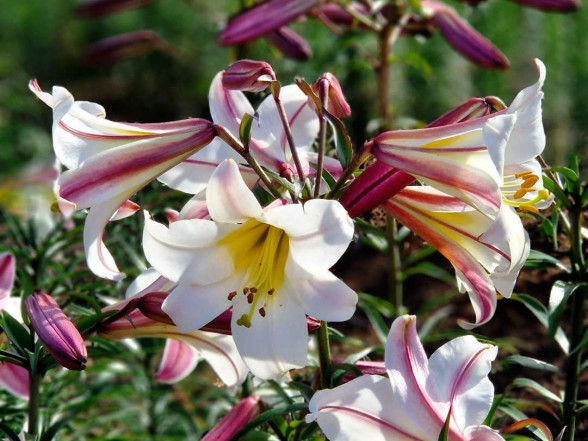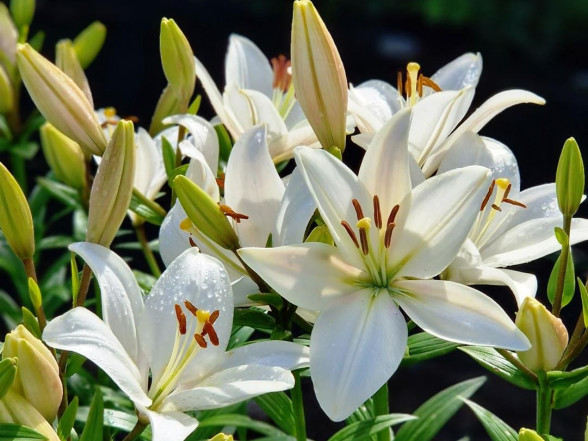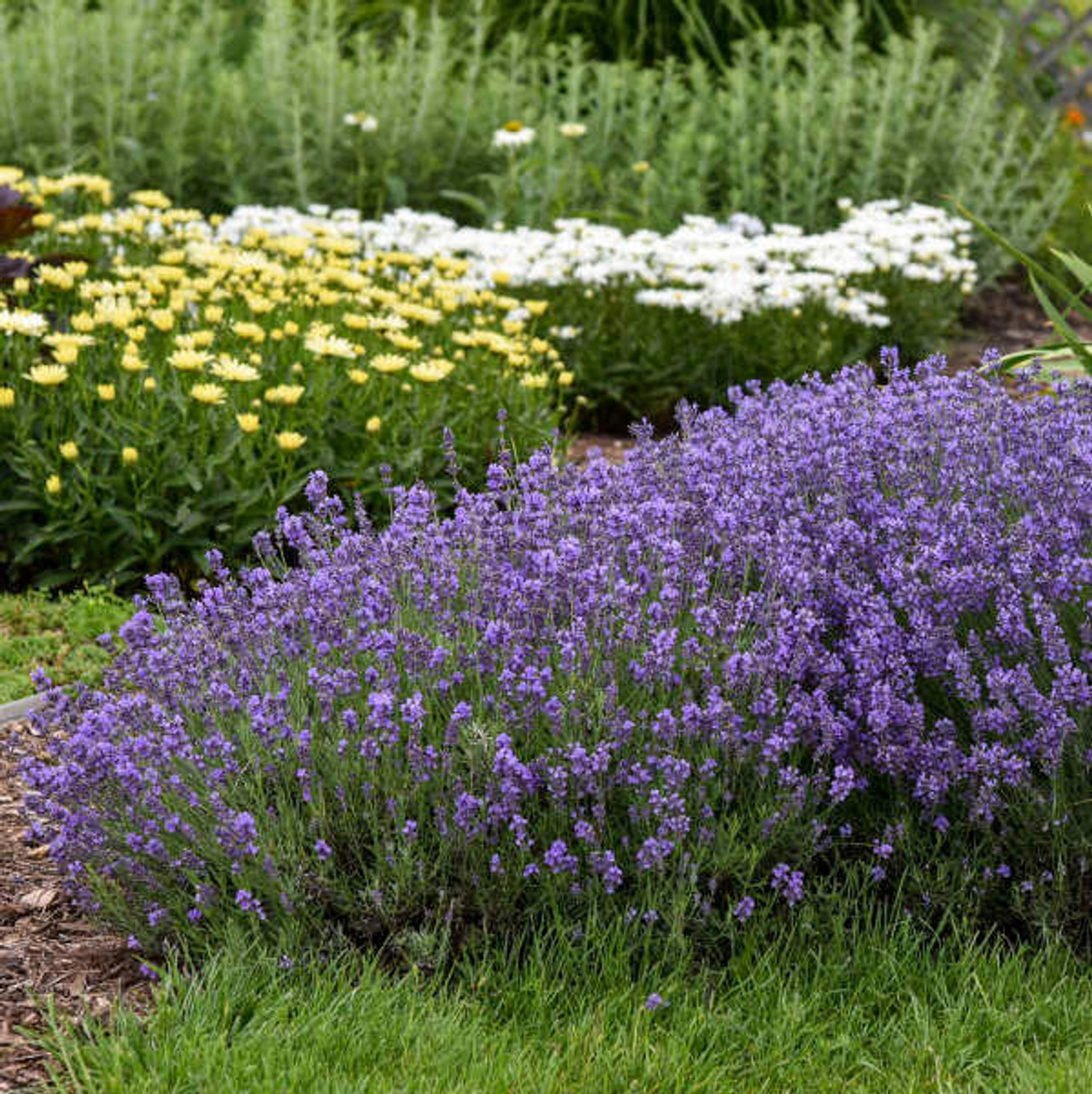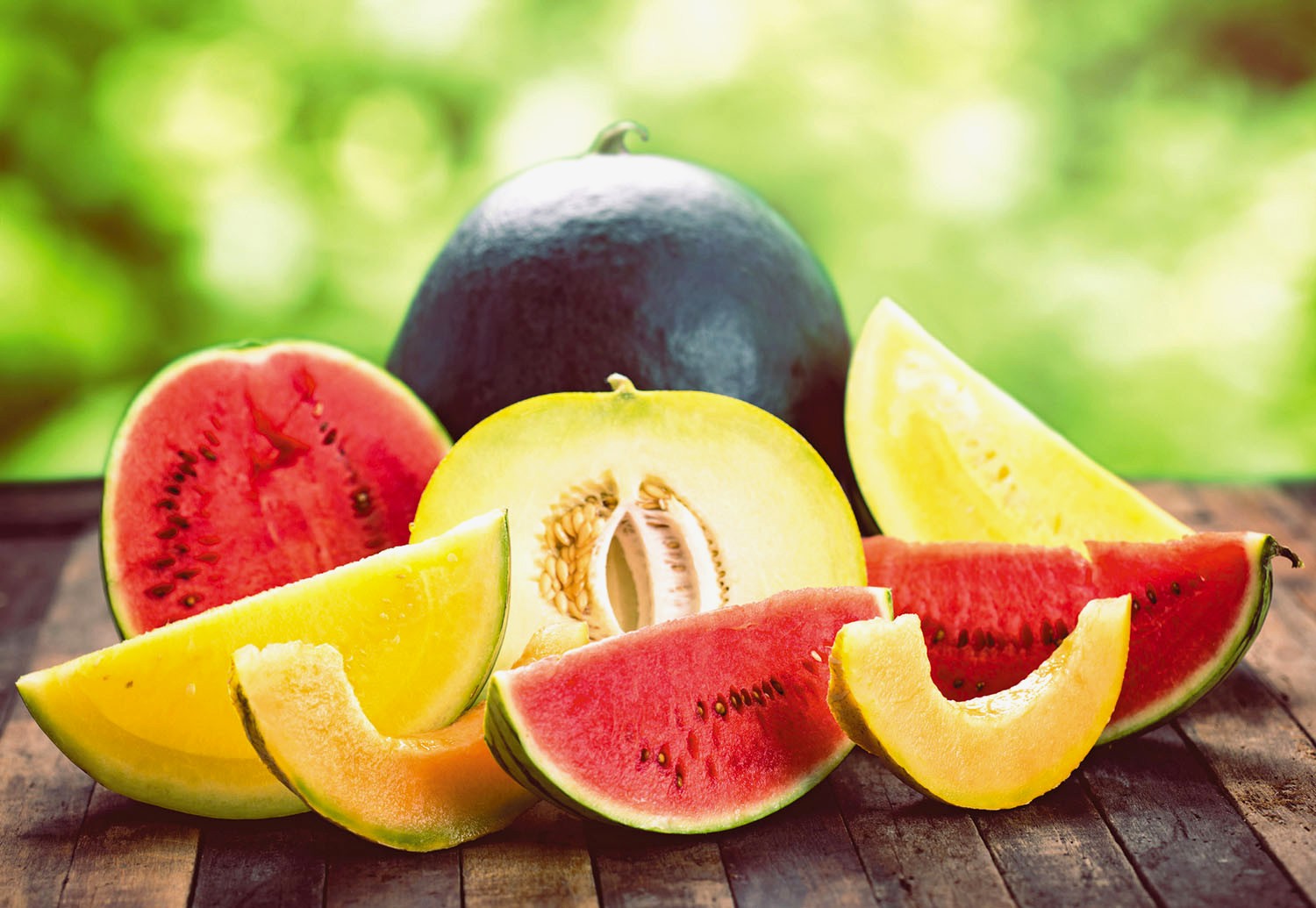Planting depth - Like all bulb flowers, plant at depth of three bulb sizes. So, if the bulb is 4 - 5 cm in the size (this is the standart size for most quality bulbs), plant it at depth of 12 - 15 cm.
Location and soil selection - The location where the lilies will grow should ideally be open and sunny. As for the soil, it depends on what is available, but the main condition is that it should be loose and "alive". This means, if there are earthworms in the soil, it’s a good sign. Depending on the type of soil, the differences most likely will be in watering and wintering.
Watering - In light soil, watering should be more frequent, while in heavy soil, it should be less frequent. Lilies tolerate dry periods well. The latest point for watering (which may be already be slightly delayed but not fatal) is when the leaves start to droop. In recent years, during the summers of 2023 and 2024, we did not water the lilies (which were planted in beds) at all, even though they were in both black and clay soil. The amount of rainfall was minimal, with the Dobele region receiving far too little, especially in 2023, when many farmers only got 1 to 3 hay bales per hectare instead of usual 10 to 15 rolls.
The basic principle of watering is to water the soil (not the leaves), ensuring the water reaches the bulb. So, when watering, it should be done infrequently but thoroughly.
Wintering - Mos lilies are actually very winter-hardy. Asiatic lillies, Martagon lilies and LA group lilies do not require any covering. Eastern lilies and their hybrids are highly dependent on the variety. Most winter well, but if you want 100% guarantee, we recommend mulching the bed in the fall - using dry peat, for example, about 10 - 12 cm thick. New shoots may freeze during spring frosts, but it has not yet been observed that they would completely perish.
Planting distance - 15 - 20 - 30 cm apart - the distance depends on the available space and the size of lily. The larger the lily and the less frequently it will be transplanted, the further apart they should be planted. The most attractive look is when they are planted in groups. If planting in a pot (there are also dwarf varieties available) calculate at least 2 liters of soil per bulb. Of course, less can be used, but then the soil should be refreshed every year or the plants must be fertilized diligently.
Fertilization - As we are supporters of mulching and we change the growing locations every second or third year, to be honest, we don’t add any extra fertilizer. We use whatever is available for mulch - grass, leaves or wood chips. Earthworms really enjoy it, and over 3-5 years, the soil transforms from heavy clay into a very good substrate.
Pests and diseases - Lily leaf blight - the leaves develop gray spots, which eventually turns brow, blacken and fall off. The appearance is visually unappealing. A proven solution is the product called "Revus". It can be purchased witout special permits at any reasonable well-stocked gardening store. We only needed one spraying, but for safety, you can do two. Follow the dosage and usage instructions on the bottle. The price of the bottle is around 5 euros, and it can also be used for cucumbers, tomatoes and potatoes. The bulb itself is not affected by this disease, and the lilies will bloom the following year as if nothing happened. But, of course .. that’s not the main reason we grow flowers.
Black-legged lily beetle - a reddish-orange beetle that does not cause direct damage, but it has larvae that can multiply sever times during the season. They are real pests. Here’s is one option - monitot and pick them off. If it’s done regularly, everything will be fine. Once a week would be too infrequent. In larger areas, insecticides are used, but these are not available to the general public, and honestly, that’s the right approach - the insecticide will kill not only the beetle but also other insects.
The list of pests and diseases in specialized literature is much larger. If you wish to study everything in more detail, just type "lily diseases and pests" into an internet search engine - you’ll have reading material for at least an hour.
Most popular abbreviations for lily groups:
A - Asiatic lilies - the largest variety of cultivars and colors - beautiful but scentless
T - Trumpet lilies - elegant, trumpet - shaped flowers - fragrant
O - Oriental lilies - various, beautiful - fragrant
OT - Oriental / Trumpet lily hybrid - tall-growing - fragrant
Interesting facts about lilies
Lilies are among the oldest known cultivated plants. In Asia, in the 2nd millennium BC, lily bulbs were cultivated for use in medicinal ointments. The Greeks and Romans grew them for decorative and medicinal purposes. In the Middle Ages, the lily was associated with the Virgin Mary as a symbol of purity, and they were often included in paintings of her. In East Asia, various species of lilies have been grown since ancient time both for food and as a decorative plants. The first recorded image of a lily dates back to around 1580 BC in Crete.
Lilies in different cultures :
1. In ancient Egypt, the lily, like the lotus flower, symbolized fertility.
2. For the Greeks, the lily flower was believed to have originated from the milk of Hera, the wife of Zeus. While nursing her child, some drops of milk fell to the ground and from them, snow-white lilies grew.
3. On the battle flag of the Persian king Darius, several lilies were depicted, symbolizing purity, courage, and heroism.
4. For the Romans, the goddess of beauty Venus, was so jealous of the lily’s white purity that she caused the pistil and pollen to grow from the center of the flower.
The lily played a significant role in many ceremonies of the Roman Empire. For example, it was one of the main flowers dedicated to Flora - the goddess of fertility. During these festivals, women competed in Roman-style fighting and running. The winners were showered with lily flowers - one of the highest honors a free Roman woman could receive.
5. The name "lily" comes from the Latin word "lilium" and specifically refers to this type of flower.
6. For Christians, lilies symbolize purity, innocence, and resurrection. In religious iconography, they often represent the Virgin Mary and are frequently depicted in paintings of Christ’s resurrection.
7. In the 5th century Clovis I, the founder of the Frankish state, achieved a great victory over the Germanic tribes on the banks of the river Li, where white lilies grew in vast numbers. After defeating the enemy, the Franks returned home, decorating their armor and flags with the colors of this noble flower. Since then, three white lilies appeared on the flags of Bourbon kings of France.
8. So why did it happen that, in the Middle Ages, the lily was a symbol of shame, branded onto criminals and fallen women on their shoulders? There are various versions online - some beautiful, some not so much - but I dare to offer my own - if the lily symbolizes purity and chastity, and at that time the inquisition was in full swing, then someone must have thought that it could help cleanse people of their sins. Logical? - Logical! Of course, it’s a bit silly, but not the only odd thing seen and heard in human history.
9. In medieval Germany, the lily was considered a flower of the afterlife. Accordind to legend, the lily symbolized the redemption of sins. It was believed that if a lily grew on a grave, the person buried beneath it was an innocent one who had been wrongfully convicted.
10. However, this message was the one I liked the most. :)
A german legend tells of a belief that at each lily flower, there lives an elf who is born with it and dies with it. During the day, the elves sleep in the flower bed (according to another belief, inside the flower itself), while at night, they begin to swing the long stem with the flower. As they swing, the lily begins to ring, thus helping the elves perform a magical prayer. After this process, the elves return to their homes and fall into a deep sleep until the next wonderful night.

